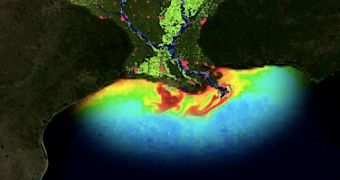About a week and a half ago, NOAA warned that a major dead zone would form in the Gulf of Mexico later this year. New info says that their predictions were fairly accurate.
Long story short: a team of researchers who have spent the past few days analyzing the chemical compound of the waters off the Texas-Louisiana coast say that, as their investigations have shown, large areas of oxygen-depleted water can now be found in the Gulf of Mexico.
Professor Steve DiMarco, who took part in this research, said that “ We found hypoxia [oxygen-depleted water] just about everywhere we looked. There is no doubt there is a lot of hypoxia in the Gulf this year.”
“The most intense area is where you would expect it – off the Louisiana coast south of Atchafalaya Bay and Grande Isle, La. But we also found significant amounts off High Island and near Galveston. The farther south we went, the less we found hypoxia in the water column, but we still found plenty of depleted oxygen waters up to just west of Freeport,” the Professor further detailed on his and his colleagues findings.
Such dead zones more often than not have a devastating effect on marine environments and the creatures inhabiting them.
This is because most plants, fish, and other animal species cannot survive in waters that have lost most – if not all – of their oxygen content. As a result, they die or seek refuge some other place.
Fishermen and coastal communities are also affected by the formation of dead zones, Newswise explains.
The area that Steve DiMarco and his fellow researchers say is presently depleted of oxygen extends over 3,100 miles (4,989 km). This means that it is roughly the size of Delaware and Rhode Island combined.
As previously explained, dead zones form because of fertilizers and agricultural runoffs that work their way into oceanic waters.

 14 DAY TRIAL //
14 DAY TRIAL //